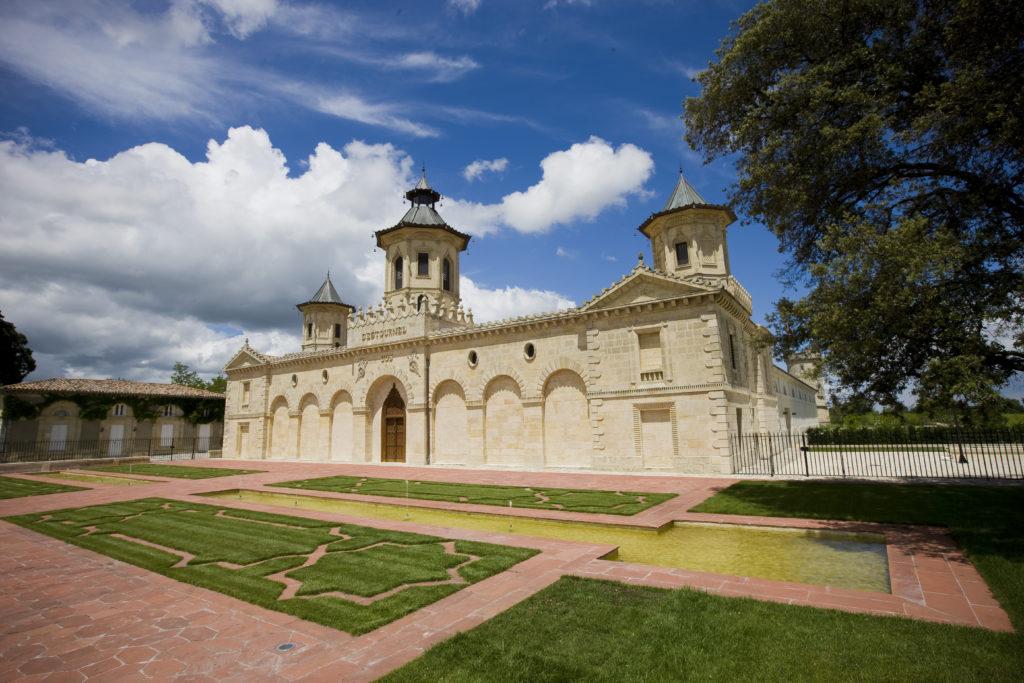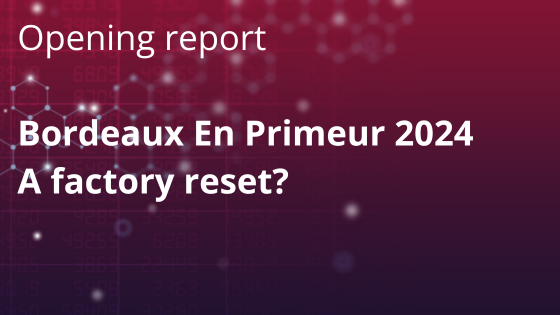- The 2020 vintage of Cos d’Estournel will be a presented in an engraved bottle.
- This is to mark the 20th anniversary of Michel Reybier’s acquisition of the estate.
- Commemorative bottles are a growing trend in Bordeaux and often see strong secondary market performance – but is it just the bottle at play?
A new milestone
Last year was the 20th anniversary of the Second Growth’s acquisition by Michel Reybier.
To mark the occasion, it has been revealed that the 2020 vintage from the estate will be bottled in a unique, black and gold engraved bottle featuring the property’s distinctive château and its pagodas.
The wine has not yet been offered en primeur but there are some early scores and notes for the wine, including 18.5 James Lawther MW writing for JancisRobinson.com and a 97-98 from James Suckling.
Growing trend
Marking important milestones with special bottles or unique labels has become an increasingly popular trend in Bordeaux in recent years.
Mouton Rothschild might be said to have helped popularise this trend and its 2000 vintage, in the bottle engraved with the gold ‘Augsburg Ram’, is one of the most famous examples.
Angélus and Pavie marked their elevation to Grand Cru Classé ‘A’ status with engraved bottles for their 2012 vintages. Margaux marked its 200th anniversary in 2015 with a special bottle and Lafite occasionally adds a small engraving to the front of the bottle in notable years – most recently for the 2018 vintage which marked the 150th year of ownership by the Rothschild family.
Market performance

But do these bottles out-perform in the market? Some do. Mouton’s 2000 vintage has risen over 1,000% in price since its En Primeur release, from £1,580 per dozen to £19,850 today – despite lacking a stellar score from Neal Martin, delivered in 2018.
Meanwhile, as examined in a recent article on the performance of the First Growths in ‘great’ vintages, Margaux’s 2015 is one of the best-performing First Growth wines, its price having risen 137% since release.
Lafite’s 2008 vintage, engraved with the Chinese for ‘eight’, is up 284% since release (although down from its 2010 peak of £14,000), while the estate’s 2018 has been one of the top-performing Bordeaux wines so far this year, its Market Price rising 5.5% in April alone.
Performance elsewhere can prove more varied. Angélus and Pavie’s 2012 wines for example have both risen post release, but while the former’s wine has enjoyed a 93% gain, Pavie’s is up by 26% at present.
Both Smith Haut-Lafitte and Talbot bottled their 2016 vintages in commemorative bottles but, for the moment, neither has seen a rise – so limited-edition designs are not a one-way bet.
Just the bottle?
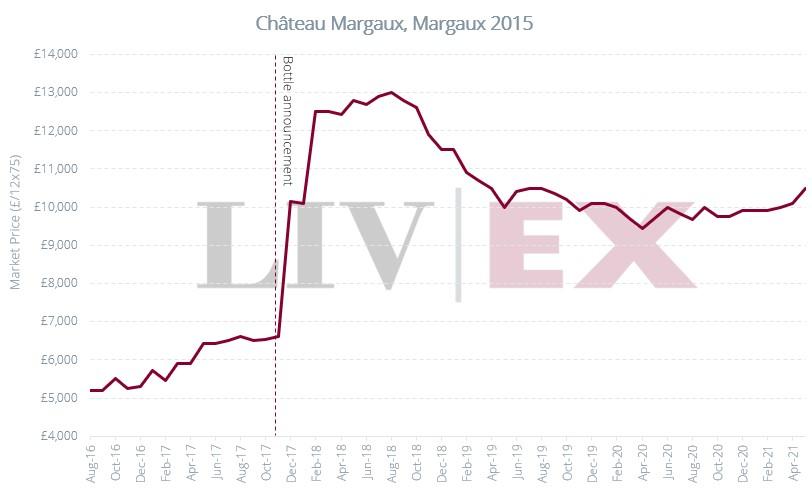 The question around limited-edition bottles is to what extent the appeal of the bottle design itself plays into secondary market gains.
The question around limited-edition bottles is to what extent the appeal of the bottle design itself plays into secondary market gains.
When looking at the performance of this group of wines, one picks up on a definite pattern of price jumps (some big, some small) in the aftermath of a special bottle or label design announcement.
Both Margaux’s 2015 and Lafite’s 2018 wines saw their fortunes in the secondary market turn decisively in November 2017 (see chart above) and October 2020 respectively, when news of their proposed packaging broke.
Pavie 2012 saw a leap of 16% in the immediate aftermath of its spring 2015 silver label announcement. Angélus 2012 leapt a staggering 80% in the six months following the announcement of its commemorative label. Lafite 2008 wine went from trading at £8,500 per dozen on Tuesday 26th October 2010 to £10,500 at midday on Wednesday 27th, a rise of 20%, after the bottle engraving was unveiled. A month later it was trading at £13,500.
Commanding a premium
What clouds the issue with these announcements is that they often coincide with the moment these wines become physical and leading critics begin issuing in-bottle scores – often a time for increased activity for highly-regarded estates.
Nonetheless, limited edition designs clearly influence buying decisions, which would explain the premium many of these wines command against their peers.
Long-term appeal
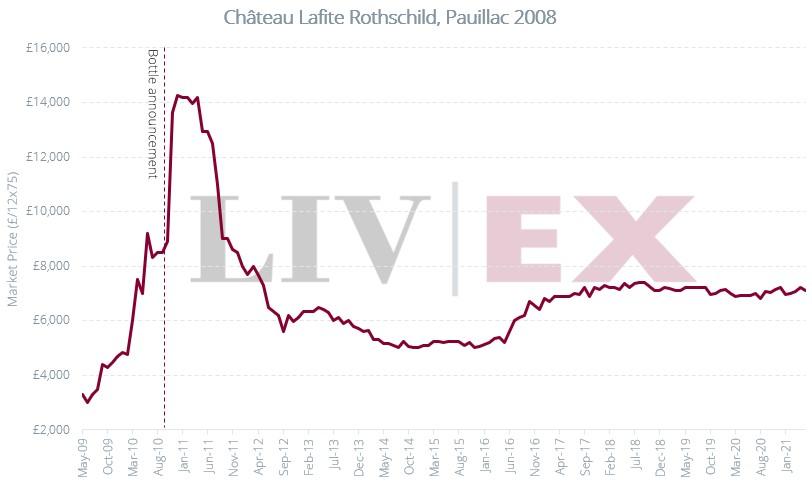 But what of the staying power of these wines? The 2008 Lafite, benefitted from its nod to the thriving China market in 2010 and had the benefit of being offered at a substantial discount to the 2007 at a time when Lafite was the leading label in fine wine.
But what of the staying power of these wines? The 2008 Lafite, benefitted from its nod to the thriving China market in 2010 and had the benefit of being offered at a substantial discount to the 2007 at a time when Lafite was the leading label in fine wine.
That said, it went from being a top-performer to one of the worst when the market turned in 2011, and its current Market Price is around half what it was at its peak. Margaux’s 2015 has also seen its price soften since highs of nearly £13,000 a dozen in 2018.
Volatility is to be expected to an extent but it can be even greater for wines placed in the spotlight through a commemorative bottle. Although these wines can rocket upwards very quickly, is the initial buzz generated by the news enough to sustain the level it might reach?
For example, does it seem likely that the 2008 Lafite is going to double in price again, based on the strength of its one, small engraving?
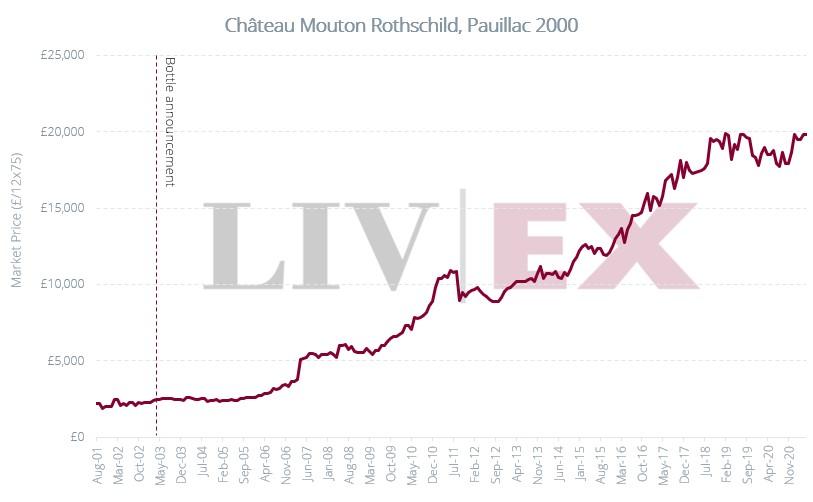 That said, if a wine with a striking bottle really captures the market’s imagination there’s not much that can slow it down.
That said, if a wine with a striking bottle really captures the market’s imagination there’s not much that can slow it down.
Mouton’s 2000 vintage is a case in point. Global downturns and market upheavals have been mere speedbumps to its progress over the last two decades. Even when Neal Martin rated it 89 in 2018 its price continued to rise.
It is clear that commemorative bottles do help influence the secondary market – but only to a point.
The allure of a collectible bottle can add to the mythos of a great vintage from a great estate. It is now a question of time to see which, if any, wine can replicate the performance of Mouton’s Augsburg Ram.
Our Bordeaux En Primeur 2020 page contains everything you need to know about this year’s campaign. You can also sign up for our daily En Primeur email alerts using the form below.


